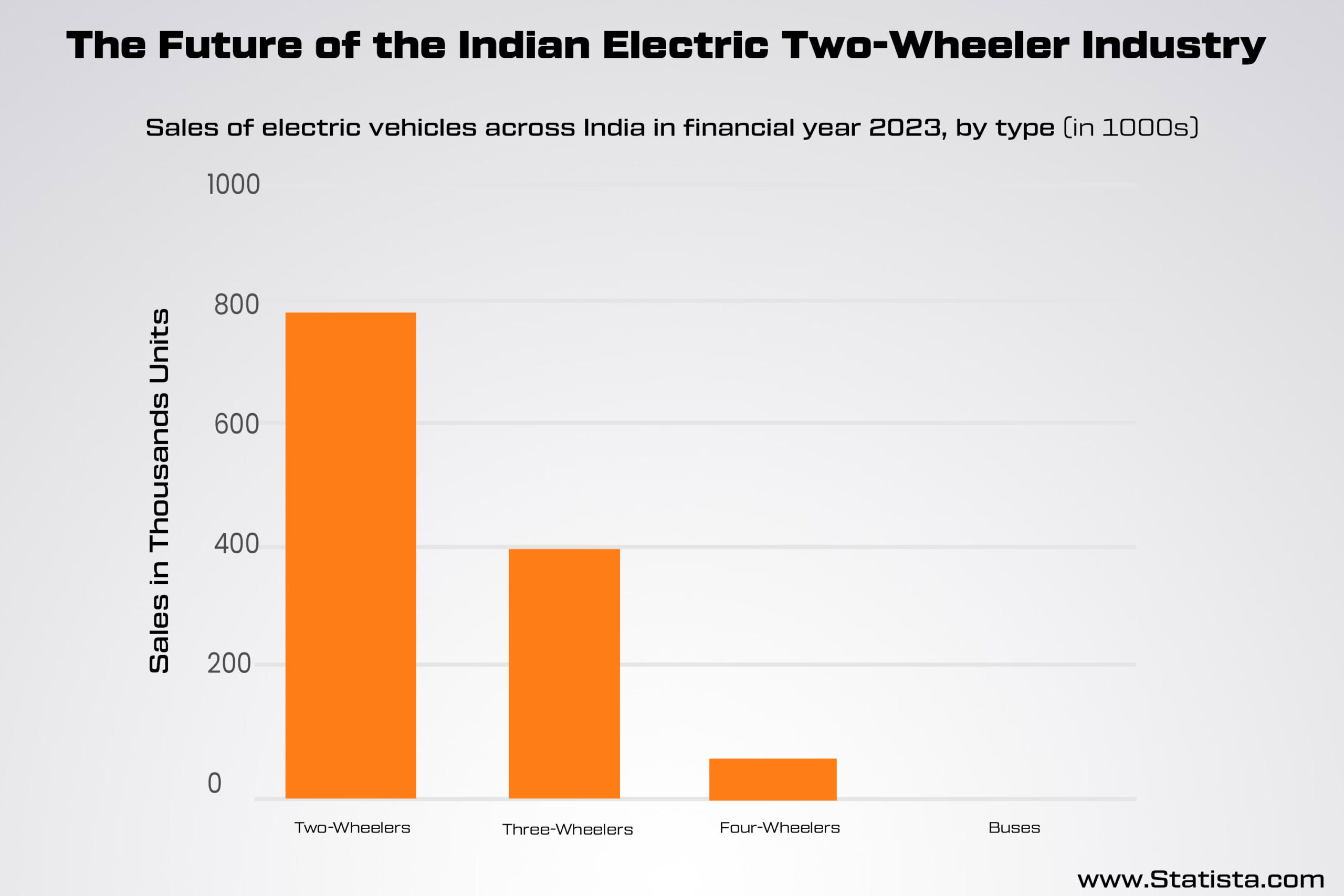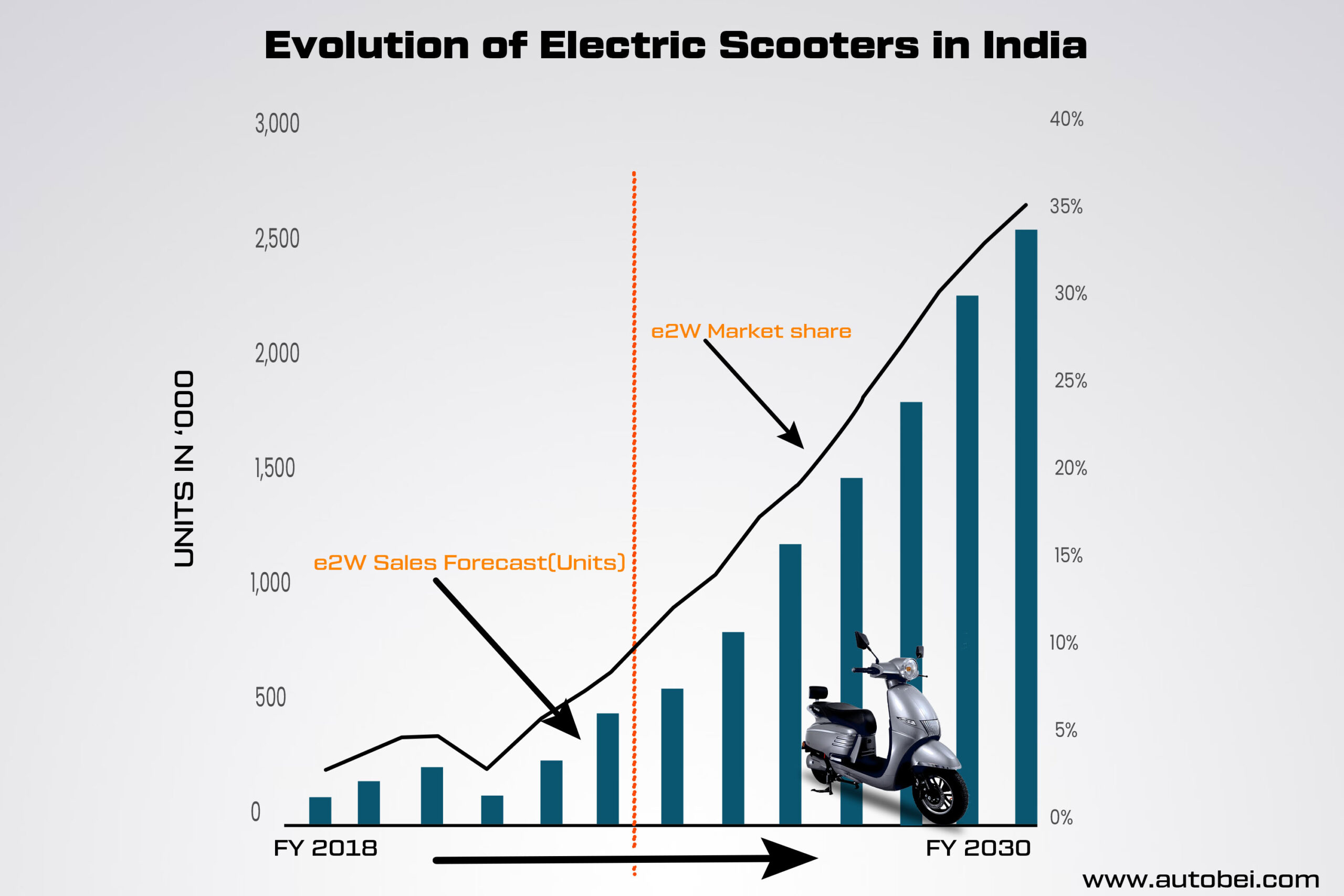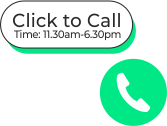The urban landscape of India is quietly but noticeably changing. We no longer see the old motorcycles and noisy rickshaws polluting the air. Instead, we have new, stylish, and eco-friendly transportation options cruising through the streets – electric scooters (EV scooters). This blog takes a closer look at the Evolution of Electric Scooters in India, examining how they have evolved in design, the advancements in technology, and what influences their future.
How has the design of electric scooters evolved in India over the years?
The early days saw electric scooters as basic, practical vehicles, focusing primarily on functionality. However, the Evolution of Electric Scooters in India in recent years has witnessed a remarkable transformation. Indian electric mobility (e-scooter innovation trends) is embracing sleek, aerodynamic designs with a focus on comfort and style.
Manufacturers are incorporating premium materials, innovative features, and vibrant color palettes, making electric scooters a mode of transport and a fashion statement. This design, and evolution of electric scooters in India reflects the changing preferences of Indian consumers, who are increasingly seeking sustainable and eco-friendly options that align with their evolving sense of style.
What Technological Advancements Have Driven the Evolution of Electric Scooters in India?
Innovation is a central force shaping the Evolution of Electric Scooters in India, particularly in the area of battery technology. Improved batteries address concerns about travel distance, allowing modern scooters to cover longer journeys on a single charge, making them practical for everyday use. Investments in charging infrastructure further strengthen the viability of these scooters. Faster charging technology significantly reduces charging time, addressing concerns about convenience. Smart features and connectivity elevate the user experience. Dedicated apps allow users to monitor their scooter’s status, plan routes, and cater to modern preferences for technological integration.
In essence, ongoing advancements in battery technology, range, and charging infrastructure are transforming the Evolution of Electric Scooters in India. These advancements move electric scooters from a niche product to a practical solution, addressing environmental concerns and positioning them as key players in the future of urban mobility.
While electric scooters may appear similar on the outside, advancements in technology are leading to significant improvements in their performance and user experience. Here are some key areas of advancement:
-
Battery technology for scooters:
Higher capacity batteries with faster charging times and improved range are crucial for wider adoption.
-
Performance improvements in e-scooters:
More powerful motors deliver greater speeds and hill-climbing ability. Electric Vehicle (EV) market growth in India is fueled by advancements in scooter technology evolution, making them more efficient and reliable.
-
Smart features:
Connectivity options, digital dashboards, and anti-theft systems are becoming standard, enhancing convenience and safety.

What Role Does Government Policy Play in Shaping the Evolution of E-scooters in India?
Government policy plays a significant role in shaping the evolution of electric scooters in India through various measures, backed by accurate statistics:
-
Subsidies and Incentives:
Government schemes like the Faster Adoption and Manufacturing of Electric Vehicles (FAME) program provide subsidies and incentives. For instance, under FAME II, the government allocated ₹10,000 crores ($1.33 billion) to promote electric mobility, including e-scooters.
-
Regulatory Framework:
With the introduction of Bharat Stage VI (BS-VI) emission standards, stringent regulations have been imposed on vehicle emissions, prompting manufacturers to shift towards electric vehicles. Additionally, the government's National Electric Mobility Mission Plan (NEMMP) aims to achieve 30% electric vehicle penetration by 2030, thus accelerating the evolution of electric scooters in India.
-
Infrastructure Development:
The government has allocated funds for the establishment of charging infrastructure across the country. As of 2023, India had over 1,800 public electric vehicle charging stations, with plans to expand further to support the growing demand for e-scooters, thereby facilitating the evolution of electric scooters in India.
-
Taxation Policies:
To incentivize electric vehicle adoption, the Goods and Services Tax (GST) on electric vehicles was reduced from 12% to 5%. This tax reduction has made e-scooters more affordable for consumers, contributing to their increased sales and further driving the evolution of electric scooters in India.
-
Research and Development Funding:
The government has allocated funds for research and development in electric vehicle technology. For instance, the Department of Science and Technology (DST) allocated ₹250 crores ($33 million) for electric vehicle R&D projects in 2023, fostering innovation in e-scooter technology and supporting the evolution of electric scooters in India.
-
Collaboration with Industry:
The government collaborates with industry stakeholders through forums like the Society of Indian Automobile Manufacturers (SIAM) and the Automotive Component Manufacturers Association of India (ACMA) to formulate policies that support the growth of the electric vehicle sector and facilitate the evolution of electric scooters in India.

Are there specific features that have become standard in the modern electric scooter?
Modern electric scooters offer a wide range of features essential for a comfortable and safe ride. These include:
- Removable batteries: For easy charging and swapping.
- Regenerative braking: Recharges the battery while slowing down.
- LED lights: Enhance visibility and safety.
- Anti-lock braking systems (ABS): Improve stopping power.
- Mobile app connectivity: Provides information and control over the scooter.
Charging Up the Future: Evolving Infrastructure
Having places to charge electric scooters is very important for more people to start using them. In India, there are more and more places where you can charge your scooter. Both the government and private companies are working on this. They are also coming up with new ideas like battery swap stations to help with worries about how far you can go on a charge. These changes mean that electric scooters are becoming a better choice for getting around easily.
What Are the Trends in Sustainability and Eco-Friendliness in the Evolution of E-scooters?
The Evolution of Electric Scooters in India showcases a major driving force behind their popularity: the sustainable appeal. Trends in electric scooter manufacturing prioritize eco-friendliness, with manufacturers focusing on:
- Recycling and using sustainable materials: Reducing environmental impact.
- Energy-efficient production processes: Minimizing carbon footprint.
- Longer battery life and lifespan: Reducing waste and resource consumption.
- Promoting renewable energy sources for charging: Building a truly sustainable ecosystem.
Have Indian Consumer Preferences Influenced the Design and Features of Electric Scooters?
Indian consumers are playing a key role in shaping the evolution of electric scooters. Their increasing demand for eco-friendly, stylish, and feature-rich electric bikes is driving manufacturers to innovate and adapt. From design aesthetics to performance specifications, consumer preferences influence the entire electric scooter development process. This collaborative journey ensures that electric scooters cater to the needs and aspirations of the Indian audience.
The journey of electric scooters in India is far from over. With continued technological advancements, supportive government policies, and evolving consumer preferences, the future of these eco-friendly electric vehicles looks bright. As the EV market growth in India accelerates, electric scooters are poised to become the dominant mode of urban mobility, paving the way for a cleaner, greener, and more sustainable future.



